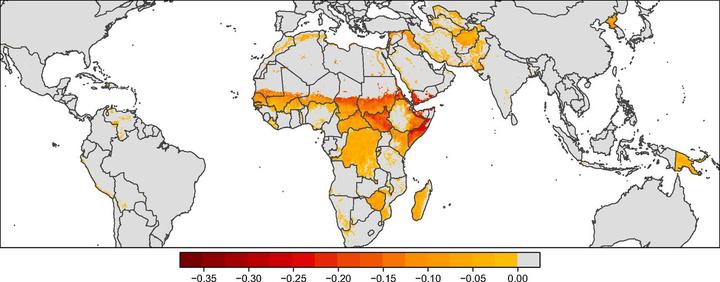 Image credit: Unsplash
Image credit: Unsplash
Abstract
As climate change continues, it is expected to have increasingly adverse impacts on child nutrition outcomes, and these impacts will be moderated by a variety of governmental, economic, infrastructural, and environmental factors. To date, attempts to map the vulnerability of food systems to climate change and drought have focused on mapping these factors but have not incorporated observations of historic climate shocks and nutrition outcomes. We significantly improve on these approaches by using over 580,000 observations of children from 53 countries to examine how precipitation extremes since 1990 have affected nutrition outcomes. We show that precipitation extremes and drought in particular are associated with worse child nutrition. We further show that the effects of drought on child undernutrition are mitigated or amplified by a variety of factors that affect both the adaptive capacity and sensitivity of local food systems with respect to shocks. Finally, we estimate a model drawing on historical observations of drought, geographic conditions, and nutrition outcomes to make a global map of where child stunting would be expected to increase under drought based on current conditions. As climate change makes drought more commonplace and more severe, these results will aid policymakers by highlighting which areas are most vulnerable as well as which factors contribute the most to creating resilient food systems.